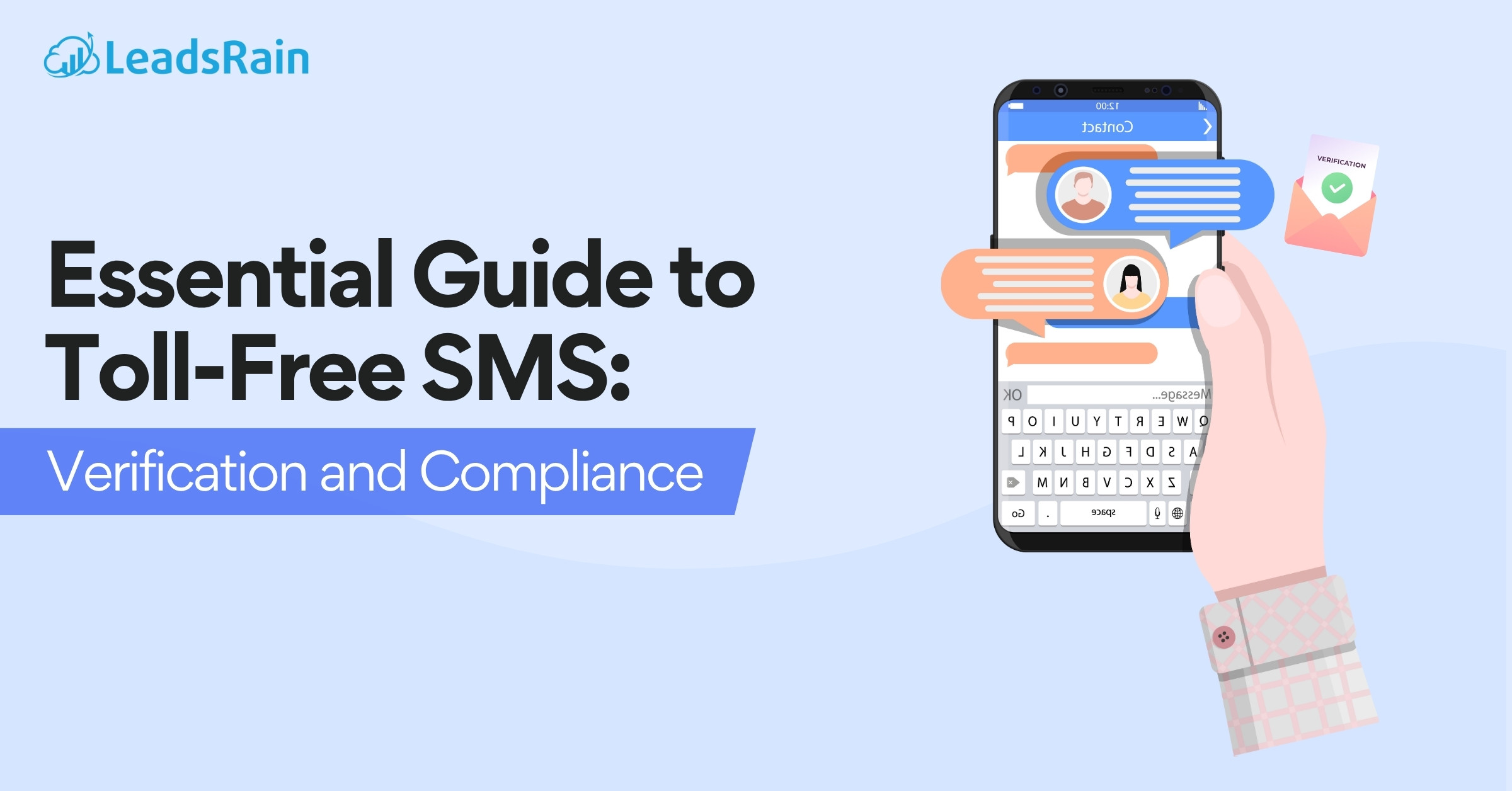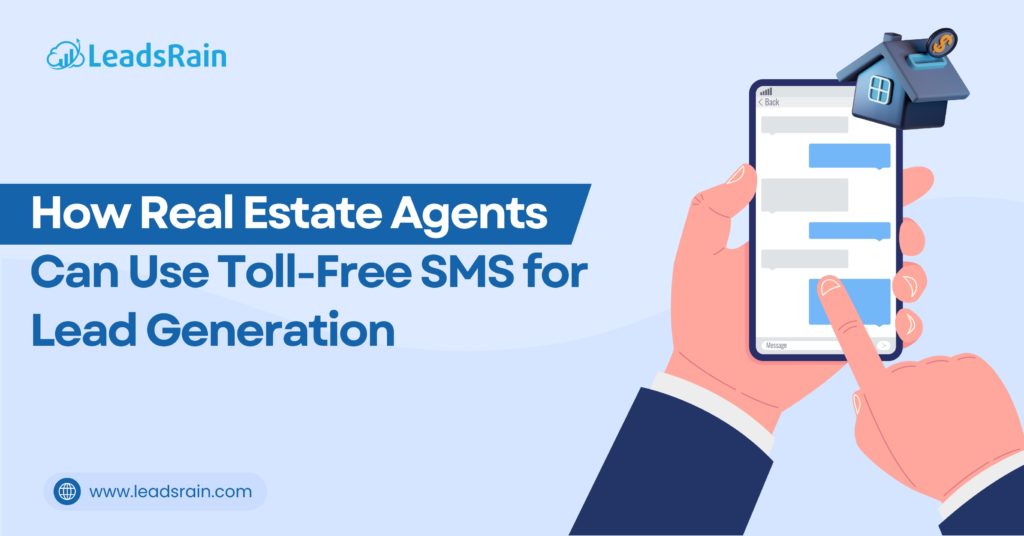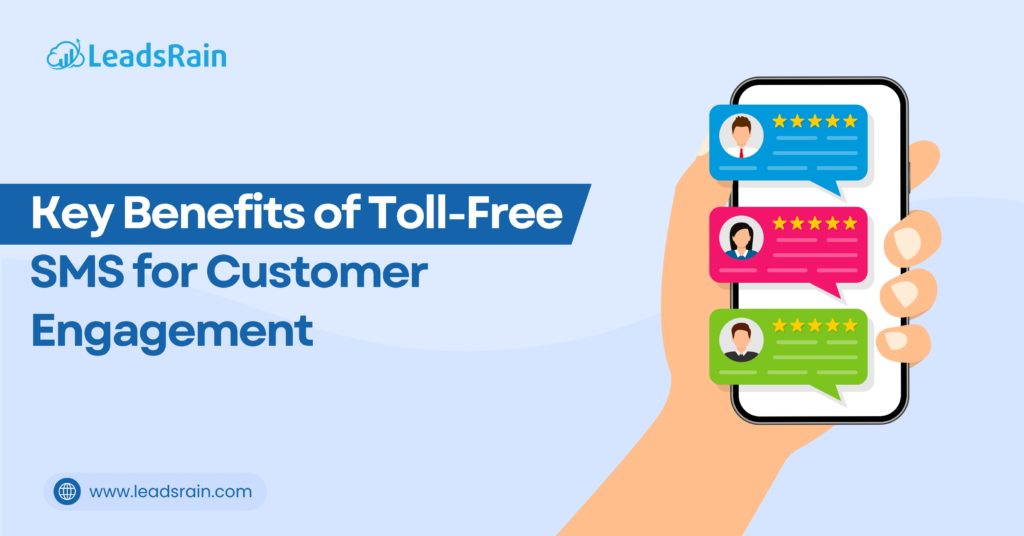Toll-Free SMS has become one of the most reliable ways for businesses to communicate with customers nationwide. Whether you’re sending a one-time password (OTP), confirming an appointment, or delivering account updates, toll-free numbers offer a professional and trusted image while ensuring consistent brand identity. They also allow for two-way communication, making it easy for customers to respond directly.
But with these benefits comes the responsibility to comply with industry standards, carrier requirements, and legal regulations. Without proper verification and compliance, messages can be blocked, filtered, or even lead to penalties.
In this article, we will cover what toll-free SMS is, why verification and compliance are critical, the exact steps you need to follow for smooth campaign approval, and practical tips to keep your messaging secure and effective.
What is Toll-Free SMS?
Toll-free SMS is a messaging service that allows businesses to send and receive text messages through toll-free phone numbers, typically starting with prefixes such as 800, 833, 844, 855, 866, 877, or 888. These numbers are not tied to a specific geographic area, making them suitable for national customer communication.
The service works across major carriers in the United States and Canada, enabling two-way text communication just like regular SMS. Businesses use toll-free SMS for purposes such as customer support, appointment reminders, verification codes, and approved promotional updates. When verified, these numbers often have higher throughput and lower filtering risks compared to unverified numbers.
Why Toll-Free SMS Matters for Businesses?
Toll-free SMS provides a cost-effective way to reach customers across the United States and Canada without being tied to a local area code. Businesses rely on it for both transactional and approved promotional messaging, benefiting from higher recognition and customer trust.
A single toll-free number can represent a brand nationally, creating consistency across all customer touchpoints. Customers often find these numbers easier to remember, which can improve engagement rates. Verified toll-free numbers also enjoy better message deliverability, provided that campaigns follow carrier guidelines and compliance requirements.
Verification and Compliance: Step-by-Step Guide
Toll-free number verification is more than just a formality—it’s the gatekeeper between your messages and your audience. Carriers in the U.S. and Canada have set strict rules that require all toll-free SMS numbers to be fully verified before they can send messages at scale. Numbers stuck in “pending” status are now at risk of being blocked, and the process can take weeks, so starting early is critical. Below is the detailed step-by-step process to ensure you remain compliant and avoid delivery issues.
1. Submit Your Business Profile and Register Your Number
The first step is to ensure carriers know exactly who is sending the messages and from which number. This involves completing your business profile with accurate and verifiable information and formally registering your toll-free number. If your business identity cannot be confirmed, carriers may reject the submission, leading to delays in communication with your customers.
- Provide your legal business name exactly as it appears on government or tax documents.
- Add your complete registered business address for proper verification.
- Include an EIN (Employer Identification Number) or similar business identifier.
- List a valid business contact phone number and email address.
- Choose the toll-free number(s) you wish to verify and ensure all associated information is correct.
2. Define Use Cases and Opt-In Methods
Carriers want to understand why you are sending messages and how recipients have consented to receive them. This helps protect consumers from spam and ensures your campaigns are legitimate. The more specific you are in describing your use case and opt-in process, the smoother your approval process will be.
- Clearly specify the purpose of your SMS campaigns, such as appointment reminders or order notifications.
- Provide sample messages that reflect your actual communication style and content.
- Outline the exact steps customers take to opt in, whether online, in-store, or via SMS keyword.
- If keyword opt-ins are used, provide an example of the keyword and confirmation flow.
- Avoid broad, vague, or misleading descriptions that might raise red flags during review.
3. Track the Status of Your Number
After submission, your number goes through several stages of review before reaching verified status. Keeping a close eye on the verification status helps you respond quickly if carriers request additional details. It also prevents last-minute surprises that could halt your SMS campaigns.
- Monitor updates like “Pending Review,” “In Carrier Review,” “Approved,” or “Rejected.”
- If rejected, review the rejection notes carefully to pinpoint and fix the issue.
- Resubmit corrected information promptly to restart the approval process.
- Document submission dates and correspondence for internal tracking and compliance audits.
4. Understand Timing and Block Risk
Verification takes time, and deadlines from carriers mean there’s no room for procrastination. Unverified or pending numbers are at risk of being blocked entirely, halting your communication with customers. By starting early, you avoid disruptions and give carriers the time needed to process your request.
- Standard processing can take 2–3 weeks, with peak times extending to 6–8 weeks.
- Carrier deadlines, such as January 31, are firm—miss them and your messages won’t go through.
- There’s no guaranteed way to fast-track a review, so plan accordingly.
- Maintain a backup verified number or alternate messaging channel for urgent situations.
5. Know the Impact on Deliverability
Verification directly impacts whether your messages make it to your audience or get filtered out by carriers. Verified numbers are seen as trusted senders, while unverified numbers can suffer from delivery failures and lower engagement. The investment in compliance pays off with stronger deliverability and campaign results.
- Verified toll-free numbers enjoy higher trust and fewer delivery issues.
- Unverified numbers face higher rates of carrier filtering or outright blocking.
- Consistent, compliant messaging patterns help maintain a strong sender reputation.
- Verification builds long-term trust between your brand, carriers, and customers.
- Better deliverability often leads to improved customer engagement and ROI.
Pro Strategies for Maximizing Toll-Free SMS Performance
To ensure your toll-free SMS campaigns achieve high deliverability and maintain carrier trust, you need to manage sending practices, monitor performance, and keep content aligned with regulations. A consistent approach reduces the risk of message filtering, improves customer response rates, and supports the long-term stability of your messaging program.
- Warm up new numbers gradually to prevent sudden traffic spikes.
- Stagger sends to avoid carrier throttling.
- Test delivery with multiple carriers before scaling.
- Update templates periodically to keep them compliant and relevant.
- Keep promotional and transactional content separate.
- Maintain the same sender ID for brand consistency.
Conclusion
Toll-free SMS offers a powerful way to build trust and connect with customers nationwide, but only if you meet verification and compliance standards. By registering your campaigns, following consent rules, and actively monitoring your performance, you can protect your brand and ensure smooth message delivery.For expert help with toll-free SMS setup, verification, and compliance, email us at support@leadsrain.com — our team is ready to get your campaigns approved and performing.




